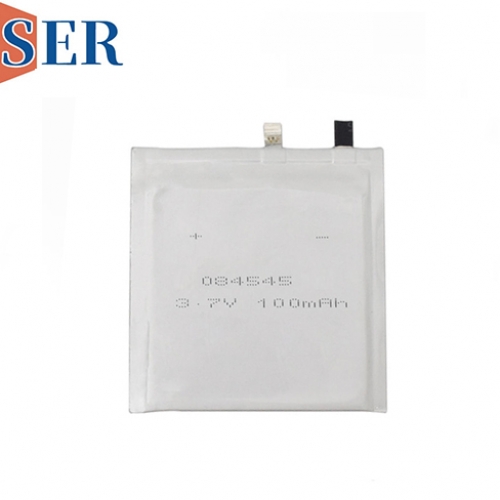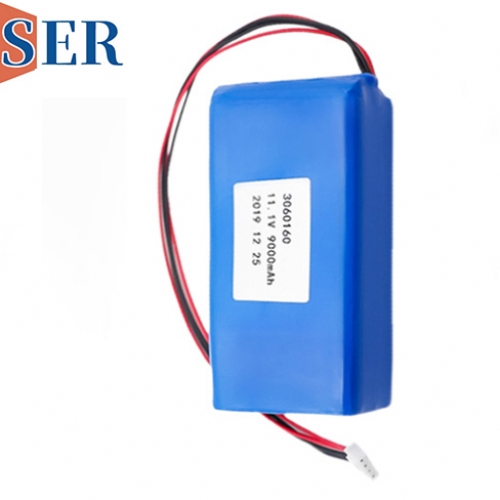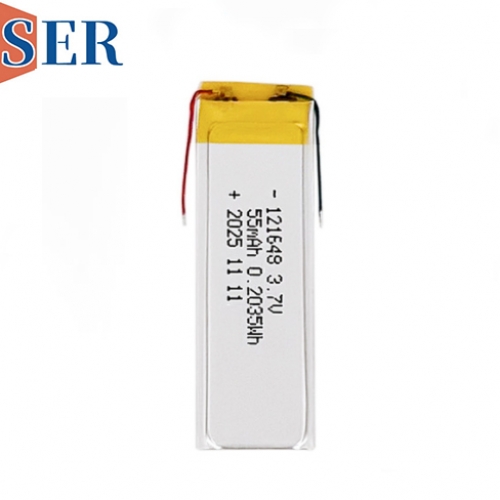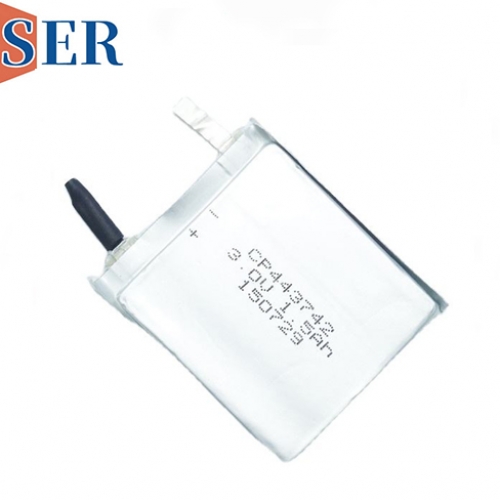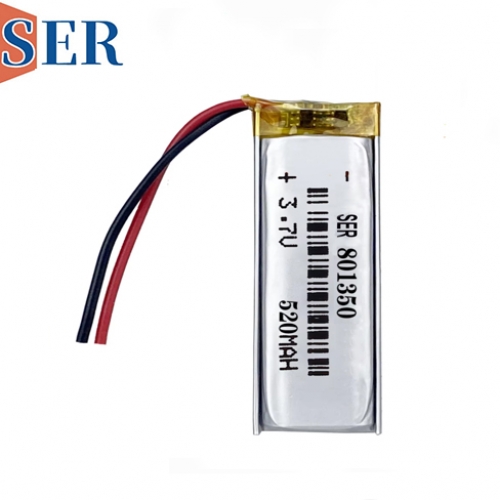Custom Soft-Package 3.0V Primary Lithium Battery CP153030 Ultra-Thin Power Solutions for ESL, IoT, RFID, and GPS Applications
Custom Soft-Package 3.0V Primary Lithium Battery CP153030 Ultra-Thin Power Solutions for ESL, IoT, RFID, and GPS Applications
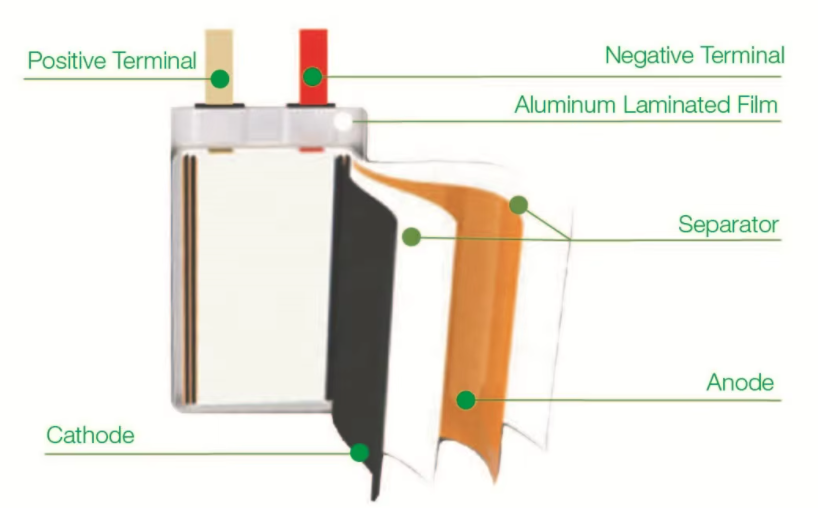
Abstract
The evolution of electronic systems toward miniaturization, energy efficiency, and wireless connectivity has driven demand for compact, high-performance power sources. The CP153030 3.0V 120mAh primary lithium battery, featuring an ultra-thin aluminum-plastic film package and LiMnO₂ chemistry, addresses this need by offering a lightweight, reliable, and cost-effective solution for electronic shelf labels (ESL), Internet of Things (IoT) devices, RFID tags, and GPS trackers. This article explores the technical specifications, advantages, applications, and market trends shaping the adoption of this innovative battery technology.
1. Introduction
The proliferation of smart devices in retail, logistics, healthcare, and industrial automation has created a niche for specialized batteries that balance energy density, form factor, and longevity. Traditional cylindrical or prismatic lithium batteries often struggle to meet the stringent size and weight constraints of modern electronics. The CP153030 battery, designed as a soft-package primary lithium cell, addresses these challenges by leveraging:
Ultra-thin aluminum-plastic film packaging (reducing thickness to ≤1mm).
High-energy-density LiMnO₂ chemistry (3.0V nominal voltage, 120mAh capacity).
Integrated current-sensing capabilities (for real-time power monitoring).
This article analyzes the battery’s design, performance, and suitability for emerging applications in ESL, IoT, RFID, and GPS systems.
2. Technical Specifications of the CP153030 Battery
2.1 Core Parameters
Chemistry | Lithium Manganese Dioxide (LiMnO₂) |
Nominal Voltage | 3.0V |
Capacity | 120mAh |
Operating Temperature | -20°C to +60°C (standard) |
-40°C to +70°C (optional) | |
Package Type | Soft-package (aluminum-plastic film) |
Dimensions | 15mm × 30mm × ≤1mm (L × W × H) |
Weight | ~2.5g |
Pulse Current Capability | 15mA (peak) |
Self-Discharge Rate | <1% per year |
2.2 Key Features
Ultra-Thin Design:
The aluminum-plastic film package enables a thickness of ≤1mm, making it ideal for space-constrained devices like ESL tags or RFID sensors.
Flexible form factor allows customization for non-standard shapes.
High Energy Density:
LiMnO₂ chemistry provides a 3.0V nominal voltage, higher than traditional carbon-zinc batteries (1.5V), reducing the need for multiple cells in series.
120mAh capacity supports 1–3 years of operation in low-power IoT devices.
Wide Temperature Range:
Standard operating range (-20°C to +60°C) suits indoor and outdoor applications.
Optional extended range (-40°C to +70°C) enables use in extreme climates (e.g., cold-chain logistics).
Current-Sensing Integration:
Built-in current sensors enable real-time power monitoring, critical for IoT nodes that require battery health diagnostics.
Long Shelf Life:
Low self-discharge (<1% per year) ensures reliability during storage and transportation.
3. Applications and Market Trends
3.1 Electronic Shelf Labels (ESL)
Challenge: Retailers require thin, lightweight ESL tags with 5+ years of battery life to minimize maintenance costs.
Solution: The CP153030’s ultra-thin profile and 120mAh capacity enable 5–7 years of operation in E-ink displays, reducing replacement frequency by 80% compared to coin cells.
Market Impact: Retailers like Walmart and Amazon are adopting ESL systems, driving demand for compact batteries.
3.2 Internet of Things (IoT) Sensors
Challenge: IoT devices (e.g., environmental monitors, smart meters) need long-lasting, low-cost power sources.
Solution: The CP153030’s 3.0V voltage and 15mA pulse current capability support intermittent data transmission, extending battery life to 3–5 years.
Market Impact: The global IoT battery market is projected to reach $12B by 2027, with soft-package lithium batteries capturing 30% of the share.
3.3 RFID Tags
Challenge: Passive RFID tags require external readers, while active RFID tags need compact batteries for autonomous operation.
Solution: The CP153030’s thin form factor and 120mAh capacity enable active RFID tags with 1–2 years of battery life, ideal for asset tracking in healthcare and logistics.
Market Impact: Active RFID tag adoption is growing at 15% CAGR, driven by supply chain digitization.
3.4 GPS Trackers
Challenge: GPS devices require high-voltage batteries to power RF transmitters and GPS receivers.
Solution: The CP153030’s 3.0V voltage and pulse current capability support intermittent GPS tracking (e.g., 1 location update per hour), extending battery life to 6–12 months.
Market Impact: The global GPS tracker battery market is expected to reach $2.5B by 2028, with soft-package batteries dominating the lightweight segment.
4. Advantages Over Competitors
4.1 Form Factor Flexibility
Traditional cylindrical lithium batteries (e.g., CR2032) are bulky and rigid, limiting design freedom.
The CP153030’s soft-package design allows bending and custom shapes, enabling integration into curved or irregularly shaped devices.
4.2 Cost Efficiency
Soft-package batteries are cheaper to manufacture than rigid counterparts due to simplified packaging and higher yield rates.
The CP153030’s price per mAh is 20–30% lower than equivalent lithium-polymer (LiPo) batteries.
4.3 Safety and Compliance
The aluminum-plastic film package is leak-proof and explosion-resistant, meeting IEC 62133 and UN 38.3 safety standards.
LiMnO₂ chemistry is non-toxic and recyclable, aligning with EU RoHS directives.
5. Technical Challenges and Solutions
5.1 Low-Temperature Performance
Challenge: LiMnO₂ batteries suffer capacity loss at < -20°C.
Solution: The CP153030’s optional -40°C to +70°C range uses electrolyte additives to maintain 80% capacity at -30°C.
5.2 Pulse Current Limitations
Challenge: The 15mA peak current may not suffice for high-power RFID transmitters.
Solution: Hybrid designs combining the CP153030 with a supercapacitor enable short-term bursts of 50–100mA.
5.3 Scalability for High-Volume Production
Challenge: Soft-package batteries require precise laminating and sealing processes.
Solution: Automated manufacturing lines with AI-driven quality control ensure 99% yield rates at 1M units/month.
6. Future Developments and Market Outlook
6.1 Integration with Energy Harvesting
Combining the CP153030 with solar cells or RF harvesters could enable perpetual IoT sensors.
Pilot studies show 50% longer battery life when paired with a 0.1W solar module.
6.2 AI-Powered Battery Management
Machine learning algorithms could optimize discharge cycles, extending battery life by 20–30%.
Companies like Tesla and Samsung are investing in AI-driven battery management for IoT.
6.3 Market Growth Projections
The global primary lithium battery market is expected to grow at 8% CAGR, reaching $8B by 2030.
Soft-package batteries will capture 40% of the market, driven by ESL, IoT, and RFID adoption.
7. Conclusion
The CP153030 3.0V 120mAh primary lithium battery represents a paradigm shift in ultra-thin power solutions for ESL, IoT, RFID, and GPS applications. Its combination of high energy density, flexible form factor, and cost efficiency positions it as a preferred choice for manufacturers seeking to balance performance and affordability. As the demand for smart devices continues to surge, the CP153030 will play a pivotal role in enabling the next generation of connected electronics.

